Review and photos by Lanthanotus, edited by Suspsy
Greens, stems, and leaves, but no teeth, no blood, no gore . . . no wonder plants seldom provide more than background for movies or our dinosaur collections. Day of the Triffids (1962) is the classic plant horror film par excellence, where seemingly harmless plants attack and kill humans and charge to take over world domination within days (for those of you that can’t stand classic B-movies or modern semi-quality TV adaptations of them, Splinter may be a more thrilling choice, though the antagonist is !SPOILER ALERT! more of a fungus than a plant). Well, to be scientifically correct, plants “rule” this planet if you can claim that for any group of species anyway. But as their reign doesn’t provide as much blood and gore as the dinosaurs’, it mostly goes unnoticed by the public. That especially goes for prehistoric plants, despite the fact that a lot of our modern life quality is a direct result of the use of them. Think of coal as the fossils of vast, ancient forests, or oil as the result of partial decomposition of prehistoric algae (and other microbiota). And to close the circle with some irony, I want to introduce you to another prehistoric plant model, crafted from such prehistoric plants.
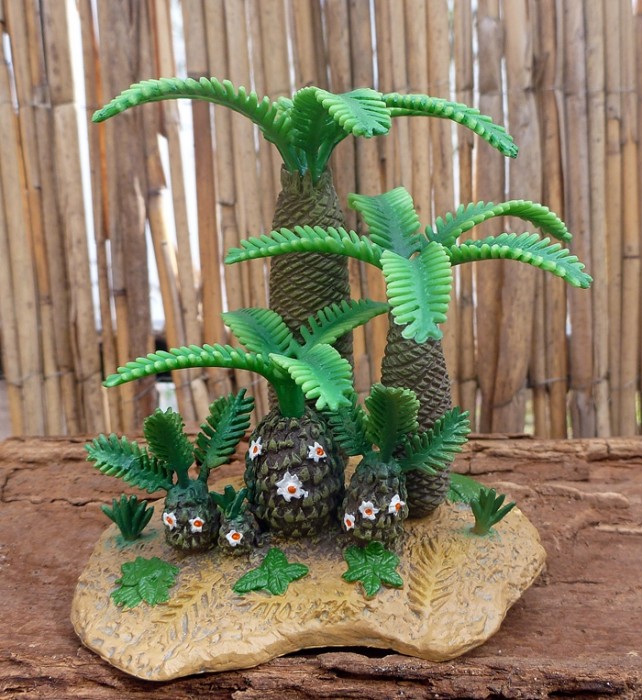
Monanthesia and Cycadeoidea is another plant model released by CollectA in 2012, Williamsonia being introduced to you by Suspsy just a couple days earlier, and the plants of this model belong to the very same order of seed plants as the Williamsonia itself, the Bennettitales. Unlike all the other prehistoric plant models on the market, this one depicts a whole group of plants and even different species, rather than just one towering plant with some scrubs around. For those unfamiliar with prehistoric plants, it may be hard to tell which plant of the group is which and to be perfectly honest, I wouldn’t have know either without some Google research.
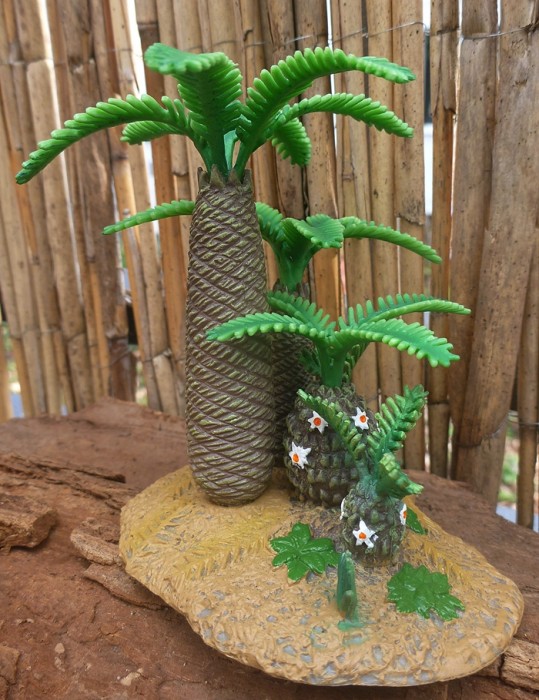
Monanthesia are the big ones in the back and the cycads are the flowering short stems in the foreground. That’s at least one view of the model, as it is sculpted completely different from the back. This distinction allows for a nice variety of grouping options should you get yourself a bunch of these models for a nice little forest diorama. The ground is decked with some green scrubs of different shapes and fallen fronds that have the same sandy color as the ground. The general sculpt and color of the base is the same for most of CollectA’s plants and mini-dioramas (Williamsonia, the Koreaceratops family, and the Hypsilophodon family) and allows for some perfect grouping as shown in the photos and in CollectA’s catalogue.
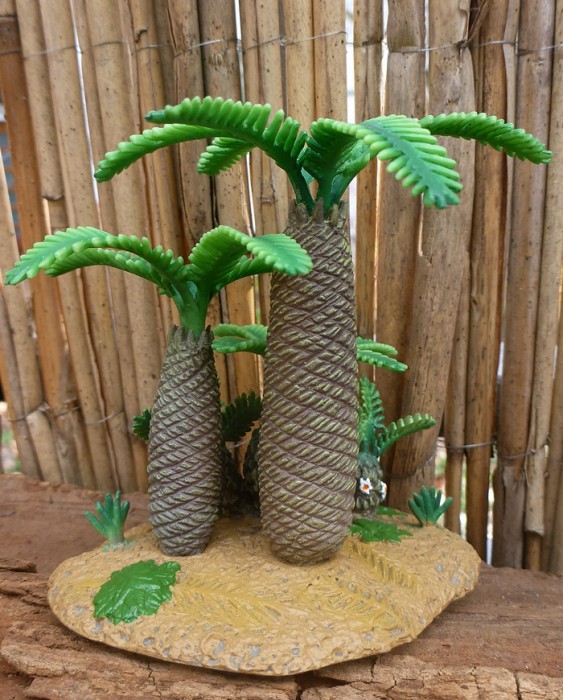
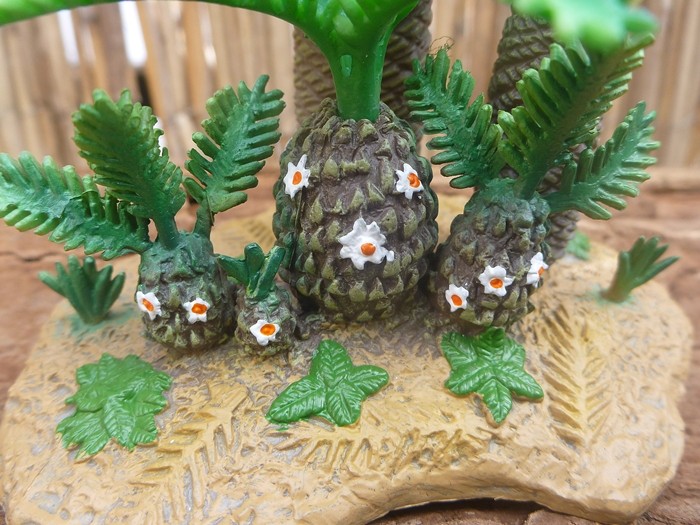
Accuracy-wise, the model is perfectly fine and comparably well detailed, and the depiction as a group reflects this accuracy, as these plants grew in groups unlike Williamsonia, according to the fossil record. A downside are the fronds, which are the same on both plant species, but this similarity does not stand out too much. And while the green of the fronds is a bit pallid, the white flowers with red centres on the cycad stems add some nice and colourful spots to the scene. Monanthesia did not grow too high (probably around 2 metres), so the model height of 9 cm makes it a fitting scale for a lot of dinosaur toy figures.
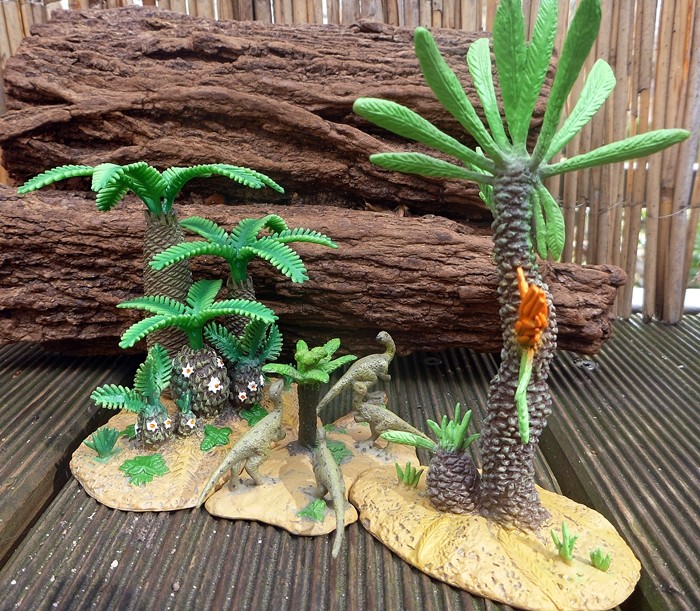
I highly recommend to get your hands onto CollectA’s prehistoric plant models and while you are at it, considering hunting for Safari’s Araucaria and Tree Fern, as these do not appear in Safari’s most recent catalogue (2016) anymore.
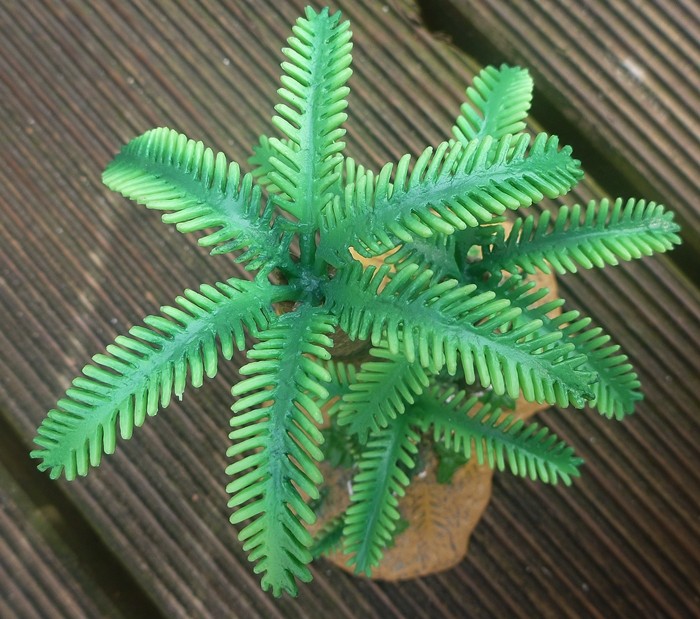
Disclaimer: links to Ebay and Amazon on the DinoToyBlog are affiliate links, so we make a small commission if you use them. Thanks for supporting us!




These strike me as the nicest ones so far.
It’s a shame there aren’t more prehistoric plant models out there! I hadn’t given it much thought myself till I picked up Safaris’ tree fern on a whim, and it added such extra vitality to my dioramas that I began collecting more!